In September 1917, Ohio Governor James M. Cox—soon to be the Democratic nominee for president in 1920—marked Labor Day with a lengthy public address. After a few words praising the American Federation of Labor (AFL) for patriotically complying with the war effort, he turned to the then-emerging phenomenon that we now call the Great Migration. “There is one symptom, however, in the present situation which presages serious trouble unless society and the state act together and avert it,” he said: “the large influx of colored people from the southern states.” City life, the governor warned, would transform black southerners from simple rural folk into “vicious types.” Their “importation” threatened “to break down the standards of labor, and to jeopardize the ideals of a progressive state.”
A budding media mogul (whose name graces today’s cable and newspaper empire), Cox had launched his political career by buying newspapers in two industrial cities in central Ohio: Dayton and Springfield. By and large, he was the same type of Progressive as the incumbent, Woodrow Wilson: cautiously friendly to workers and farmers, internationalist in orientation, racist as a matter of course.
Springfield, one of his crucial bases of support, had a history of racial terror. In 1904, after lynching a black man named Richard Dickerson, a white mob torched the town’s small black neighborhood. (No one died in the flames because authorities told the residents to leave, then allowed their homes to burn.) Two years later a bar fight and a shooting led to another episode of mob violence and arson. In 1921 a third eruption was brought on, as the historians August Meier and Elliott Rudwick put it, by “white awareness of a ‘Negro influx.’”
As violence spread, the National Guard occupied the town. The next year Springfield resegregated its schools, which had been integrated under state law since 1887, establishing an all-black elementary school for a district it named “Needmore.” The superintendent and two of the five members of the school board were later discovered to be enrolled members of the Ku Klux Klan.
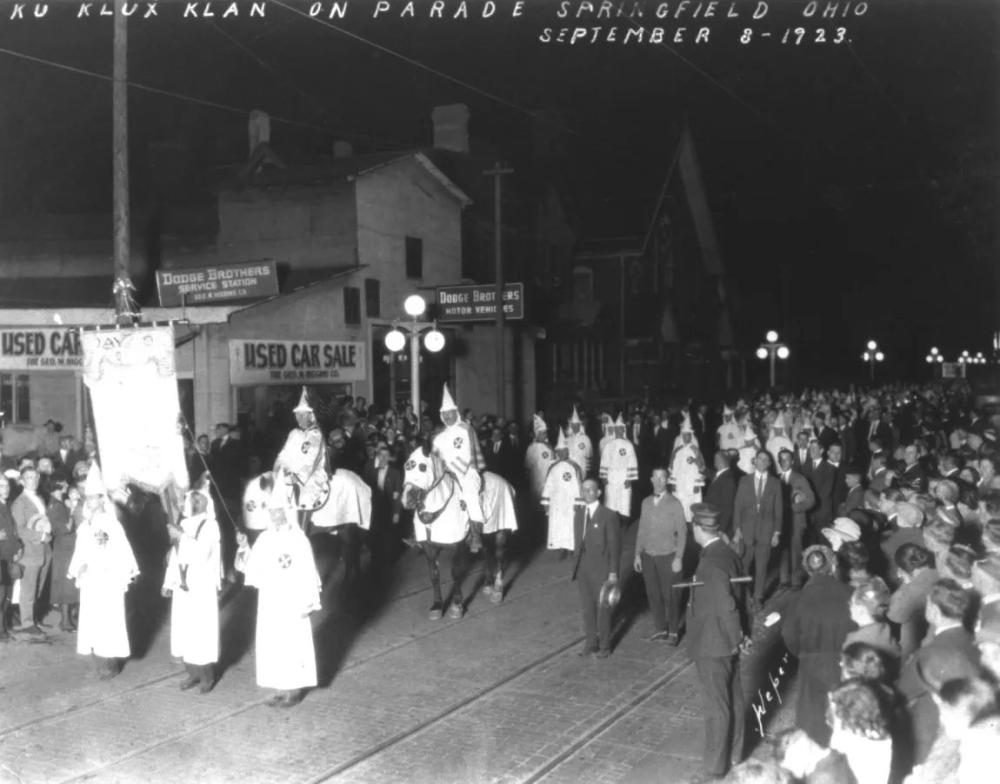
Members of the Ku Klux Klan parading through Springfield, Ohio, 1923. Corbis/Getty Images
Spasms of white mob violence, in other words, were a feature not just of the Jim Crow South but also of the industrial North, where they likewise enforced a daily regime of segregation and exploitation. The violence peaked in the years during and just after World War I. Much of it was concentrated in smaller industrial centers—East St. Louis, Chester, Indianapolis, Omaha, Gary. At times it was focused on black strikebreakers, “imported” (often unknowingly) for the purpose. But it was common for self-fashioned friends of labor like Cox to imply that all black migrants had been “imported” this way—“dropped on Springfield,” as one might hear it said today.
Springfield’s central industry, agricultural equipment, was crucial to America’s industrial takeoff in the late nineteenth and early twentieth centuries. The enormous productivity of American farming—made possible in large part by the innovations of International Harvester, John Deere, Caterpillar, and Springfield’s own Champion Machine Works and Oliver Farm Equipment—had generated a massive trade surplus, which in turn stimulated the expansion of the railroads used to ship farm products out of the plains. Railroads, of course, are made of steel, as are the reapers, mowers, and binders that sped the flow of grain from the heartland. In this way American farms indirectly invigorated the steel industry, which matured to furnish the material for skyscrapers, highways, and automobiles. Thus economic development from the 1870s to the 1950s turned on the fulcrum of agricultural productivity, for which cities like Springfield grew to supply the instruments.
*
At each phase of this process, new sources of manpower had to be found to dig the ore and lay the tracks, stoke the furnaces and smelt the metal, rivet the parts and weld the edges. Typically, labor came from the widening shatter zone of collapsed rural economies on the peripheries of Europe. Peasant households could not withstand integration into the global capitalist system, where cheap American grain now set the prices. Instead they journeyed to the source.
Adjusting to industrial America could be an ordeal. In 1912 the Springfield Daily News ran an article headlined, “Work of Aliens in Factories Is Important,” illustrated with an account of “a large plant in Ohio, which employs several hundred Magyars. When they first came they had the usual undesirable qualities of the new immigrant,” the journalist observed. “But the superintendent planned to eliminate these qualities.”
Springfield’s factories, however, drew more of their labor from the internal hinterland than from the peasantries of Italy, Poland, and Austria-Hungary. The poor folk of the US South who could no longer scratch out a living as debt peons growing cotton or digging coal endured the ordeal of adjustment as well. And not only the black migrants whom plebeian white Northerners greeted with violence, but also the thousands of white “hillbillies”—the ancestors of J.D. Vance. As the historian Max Fraser shows in his recent book Hillbilly Highway, they too had “the undesirable qualities of the new immigrant.”
In nearby Dayton, for example, landlords rented to “hillbillies” by the week, fearing they would skip out on leases; the health department bemoaned that they had to be instructed on “cleanliness, immunizations, sanitation, and nutrition” at a fourth-grade level. “Our laws and customs are different from anything they’ve known,” complained a Cincinnati cop.
With each new wave, the same howl rose from an American throat: this group is too different, too unprepared, too ill-bred: these Irish, these Chinese, these Italians, these Jews, these “colored people,” these hillbillies, these Mexicans, these Salvadorans, these Venezuelans, these Haitians. In 1909, for instance, California newspapers published stories claiming that Chinese gang warfare in San Francisco was fueling a trade in cat meat. “There is a superstitious belief among the Chinese that if their warriors are fed on the flesh of wild cats, they will assimilate the ferocity of the beasts.” In 1911 a Brooklyn man accused “a gang of foreign laborers”—ethnicity unspecified—of catching and eating his three cats. Then, as now, the provenance of the account was indirect; the story was thirdhand by the time it was printed.
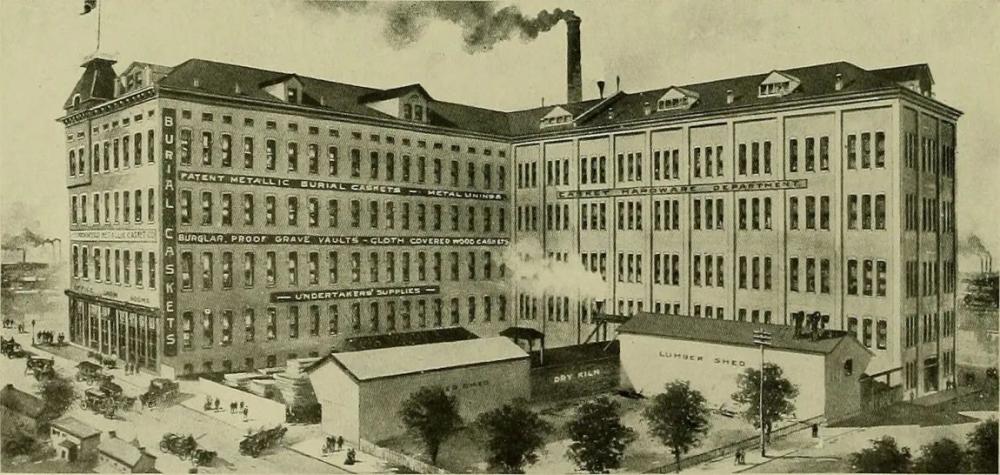
A view of the Springfield Metallic Casket Company manufacturing plant, from William Mahlon Rockel’s 20th Century History of Springfield, and Clark County, Ohio, and Representative Citizens (Biographical Publishing Co., 1908) Internet Archive/Wikimedia Commons
To say that economic development and the creative destruction that attends it—discarding or elevating old working populations, installing new ones—creates a new phantasmagoria of cat-eating immigrants in every generation is only to describe from another angle the basic historic problem of the American working class. Continually flushed with new entrants, the working class in this country has always heard in one ear an appeal to detest the newcomers, to abhor their lawless ways and their degenerate habits. This voice has sometimes come from within the house of labor, although almost invariably its right wing. In 1902 the president of the AFL, Samuel Gompers, cowrote a pamphlet insisting that “sixty years’ contact with the Chinese, twenty-five years’ experience with the Japanese and two or three years’ acquaintance with Hindus should be sufficient to convince any ordinarily intelligent person that they have no standard of morals by which a Caucasian may judge them.”
More influential, though, are the voices of politicians who speak the language of class consciousness to divide rather than unite the working class. Woodrow Wilson, for example, a Jim Crow champion who tentatively courted organized labor, compared the consequences of Asian immigration to those of the Atlantic slave trade—for white people, that is: “Remunerative labor is the basis of contentment. Democracy rests on the equality of citizens. Oriental coolieism will give us another race problem to solve and surely we have had our lesson.”
The purported enmity between different kinds of laborers—free and slave, native-born and immigrant, skilled and unskilled, black and white, male and female—is not a vestige of a bitter past. It is continually reactivated. A primary task of the American left, then, has been to mediate between one generation of working people and the next, to find the openings between their diverse traditions and connect them.
*
The working-class black migrants who came to Springfield in the 1910s organized civil rights protests as early as 1922, boycotting and picketing the newly segregated schools. The Civil Rights Protective League that they formed was led by a small group of black professionals, but its rank and file came from new migrants, concentrated in “Needmore” and congregating in so-called “hellfire” churches. The League denounced preachers who would not collect for its cause on Sundays, confronted black teachers who worked in segregated schools, and visited families that did not honor the picket line.
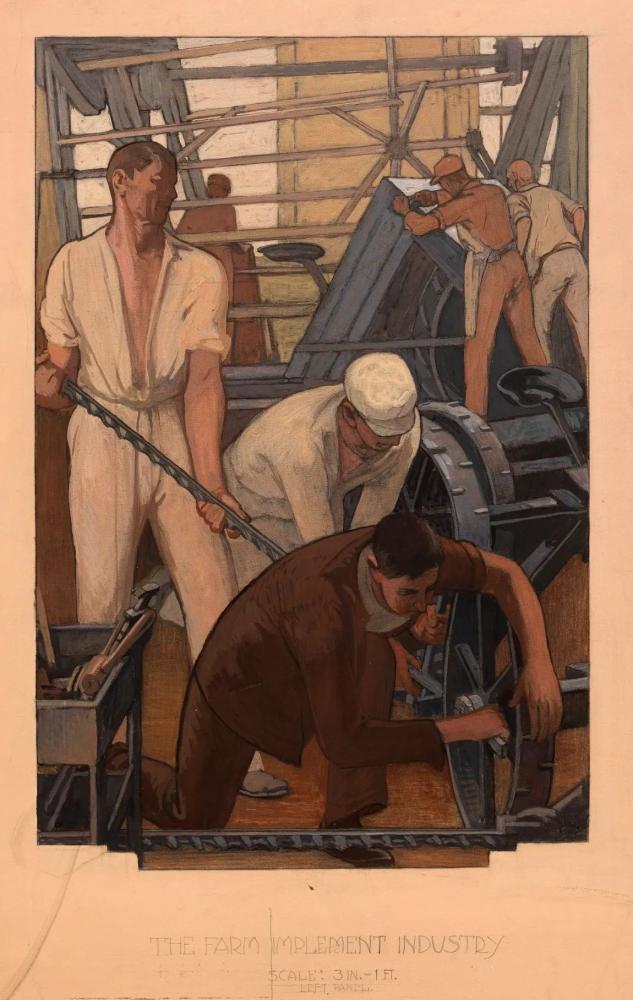
Herman Henry Wessel: The Farm Implement Industry (mural study for the Springfield, Ohio, post office), 1936. Smithsonian American Art Museum/Wikimedia Commons
In retaliation the local prosecutor charged five sets of working-class parents under truancy law and a laborer named Waldo Bailey for assaulting a teacher crossing the picket line, but secured no convictions. The League, on the other hand, won favorable rulings in litigation over the schools and even organized to defeat Klan candidates for the school board, although not for city commission or police judge. But it never managed to reintegrate the schools. White supremacy prevailed by inertia. “The victory of the Springfield Negroes was an empty one,” Meier and Rudwick observed.
More durable change arrived in the 1930s, with the breakthrough of the labor movement and the rise of the political left. William and Mattie Mosley, for example, came to Springfield from Tennessee with their children in the Great Migration. By 1920 William was working as a molder in a foundry, although he left at some point to become a gardener. Mattie became involved in the movement to boycott the segregated schools. Their son Herbert got a job as a laborer at the Oliver Farm Equipment Company. When the new industrial union movement swept through Springfield in the 1930s, for the first time uniting the industrial working class across lines of race, ethnicity, and skill, it would have swept them up too. The Mosleys likely joined integrated organizations—United Auto Workers Local 884 for Herbert—which advocated for their right to access civic institutions and defended them at their workplaces.
These new unions had internal shortcomings, significantly on matters of race, but they nonetheless formed a kind of unity out of the polyglot generational cascade of Slavs, Italians, white Appalachians, and southern black migrants. In the process they brought real democracy for the first time to places like Springfield, by harnessing white workers to the struggles and sometimes even the leadership of their black neighbors. As a small item in the Springfield Daily News observed in 1942, a meeting of the city’s CIO Council that had convened to consider political endorsements also appointed a committee of two UAW officials—one white, one black—“to investigate the existing recreational facilities for Negro members of the CIO in Springfield. The committee will go before the City Commission Monday night to discuss proposals to better these facilities.”
It is not too much to say that the early phase of the civil rights movement grew in part out of these experiments in working-class unity. Sometime in the 1940s, Mattie Mosley sat down at the Springfield Woolworth’s lunch counter; she went on to coordinate boycotts of movie theaters and restaurants.
From the next generation, she was joined by Veda Patterson, a nurse’s aide and daughter of a janitor at the gas company, who organized students from Antioch College, one town over in Yellow Springs, to join picket lines. (Police harassed Patterson out of town in the 1960s, after she got involved in the black nationalist Republic of New Africa.) In 1964, when a Yellow Springs barber refused to serve black clients, two hundred people sat down and locked arms across Xenia Avenue. With gas and fire hoses, the police tried and failed to break up the action in what the Springfield News-Sun called “a wild, hour-long melee.”
*
The twentieth-century generations each brought something to the workers’ movement and the political left that grew symbiotically with it. In the Great Migration generation, the courage and endurance learned in the Jim Crow South became steadfastness in facing down the Klan. In the years of depression and war, black workers banded together with hillbillies and immigrants to triumph over the agricultural equipment companies. In the 1960s and 1970s the racial liberalism they made possible interacted with other, sometimes more radical traditions—black nationalism, student politics. Even a hillbilly New Left cropped up in some pockets of the country, most notably Chicago. In those decades Springfield elected a Jewish mayor, Maurice K. Baach, followed by a black mayor, Robert C. Henry—making it briefly the largest city ever led by an African American.
Over the past four decades this accumulated solidarity has diminished. At the end of the 1960s, as growth slowed and inflation set in, economic and social tensions within New Deal liberalism came to the surface. In the early 1980s a cascade of plant closures and mass industrial job loss followed. The link that organized labor had forged between the ideological left and the industrial working class ruptured almost completely under these pressures. Even where factories remained open, workers’ numbers were reduced and their confidence was broken for a generation.
In Springfield, for example, workers at International Harvester joined a major national six-month strike against the company in 1979–1980. They seemed to win, only to be slammed by major waves of layoffs, then forced into wage and benefit concessions by 1982. The company, now operating under the name Navistar, is still there, but the workers and their union lost the initiative and never got it back. In bitter struggles over schools, neighborhoods, jobs, and welfare, the politics of racism and xenophobia resurfaced, summoned by the emboldened politicians of the New Right in the 1980s and their successors down to the present.
On the ground, certainly, local activists have attempted to hold the community together while Donald Trump and Vance summon a racist panic to rip it apart. Many of the institutional legacies of the 1930s and 1940s persist in some diminished form: the UAW is still there. But they are shadows of their former selves. Even as neo-Nazis parade in the streets and the Klan covers Springfield with its literature, liberal politicians at the national level, most notably Kamala Harris and Tim Walz, are pretending that the problem will go away if they denounce the racist slander in Springfield while maneuvering rightward on border politics.
*
Springfield has declined in population by about a third since its midcentury peak. The county lost 22,000 manufacturing jobs in the 1990s. But in recent years it has been a modest exception to the region’s bleak trajectory, attracting new investment from manufacturers and logistics companies. The relatively strong labor market is a novelty of recent years. No doubt the whiplash of decades of decline followed by sudden growth has led to some of the present dislocation.
In any case, over the past few years, Springfield’s Haitians have done the same as so many prior waves of immigrants: legally in the country under Temporary Protected Status, they followed word of mouth to find their way to where the work is. For now, they are employed in classic greenhorn jobs—blue-collar, less likely to require English—and starting to form a new community: a couple of restaurants, a community center, an employment agency, mutual aid through the St. Vincent de Paul Society. Soon enough, their anglophone children will be teaching in the schools and nursing in the hospitals, as many Haitian Americans do in Florida, New York, and across New England.
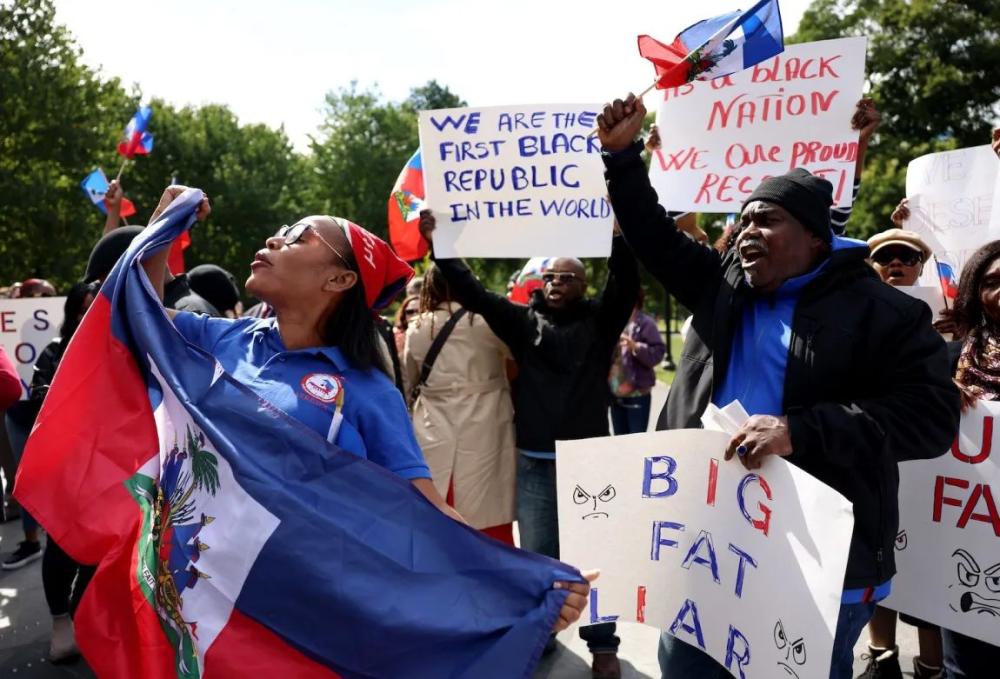
Members of Boston’s Haitian community and their allies rallying against anti-Haitian racism, Boston, Massachusetts, September 24. Jessica Rinaldi/The Boston Globe/Getty Images
The Haitians at the center of the story are themselves, in other words, perfectly ordinary. The racist panic about them, however, bespeaks the special role of Haiti in modern history. In a real sense the Haitians who overthrew slavery were the first modern proletariat: they came from many nations, spoke many languages, and followed many cultural and religious traditions; yet they welded themselves together to defeat the world’s most powerful empires. Their revolution came in this respect to stand for the power of enslaved people to transcend the differences imposed upon them, and thereby for the threat and promise of working-class unity. Wealthier states have punished the island nation for that unique crime ever since, and in the nineteenth century fear of the Haitian Revolution was a potent force across the Western Hemisphere.
Perhaps the 1790s are too long ago for this to matter, but I think not. The image of Haiti as a country beyond the pale, populated by bestial and superstitious brutes, has circulated widely in recent weeks, and it surely owes something to this history. Invocations of voodoo, “white genocide,” and IQ scores form an unmistakable link between the panicked response to the revolution in the eighteenth century and the politics of white supremacy today. The memory of the revolution, for that matter, might also be readily available to Haitian workers themselves, who are often committed trade unionists in their concentrations in the hospitality and health care industries in the northeast and Florida. Perhaps for this reason, SEIU and UNITE HERE have been relatively outspoken about events in Springfield.
In my experience in the labor movement, I’ve rarely seen workers or organizers give the kind of speeches you might see in a movie about a strike; organizing happens in conversation, not oratory. Once, though, I was helping out with some hotel workers organizing in Connecticut; the housekeeping staff was all Haitian. Prior to going out to canvass their coworkers, the organizing committee convened for a small rally. An organizer got up on a picnic table and addressed the group in Creole. I couldn’t make any of it out, except one phrase at the emotional high point of the speech: “Toussaint Louverture.”
Gabriel Winant is associate professor of history at the University of Chicago and a volunteer organizer with the Emergency Workplace Organizing Committee. (September 2024)
The New York Review of Books has established itself, in Esquire’s words, as “the premier literary-intellectual magazine in the English language.” The New York Review began during the New York publishing strike of 1963, when its founding editors, Robert Silvers and Barbara Epstein, and their friends, decided to create a new kind of magazine—one in which the most interesting and qualified minds of our time would discuss current books and issues in depth. Just as importantly, it was determined that the Review should be an independent publication; it began life as an independent editorial voice and it remains independent today.

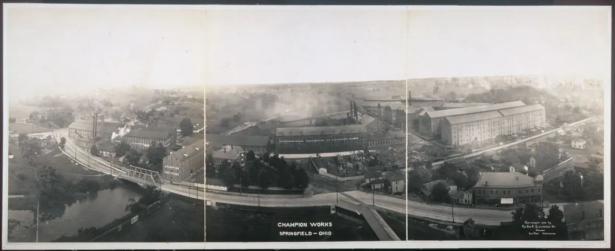
Spread the word